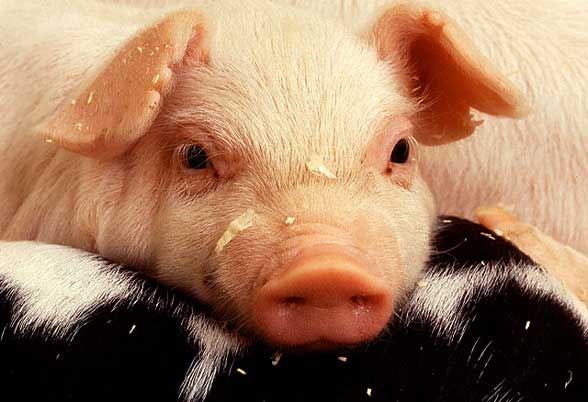Swine Nutrition Guide: Health
Health -- When pigs are exposed to antigens (substances foreign to the body), there may be fewer nutrients available for normal growth.
Management procedures such as segregated early weaning (SEW) or medicated early weaning (MEW) are being employed to reduce or eliminate the pig’s exposure to antigens. Presumably because of an improved health status, SEW or MEW pigs consume more feed, grow faster and require less feed per unit of gain from weaning to slaughter weight than do pigs weaned after about 21 days of age and kept in the vicinity of older pigs.
Information on the relationship between pig health and nutrient requirements is being generated. Preliminary research indicates that amino acid requirements (expressed as amount/day) are increased in high-health pigs, because of their greater capacity for lean growth. Starting pigs derived from SEW or MEW programs should not require diets containing higher concentrations of nutrients than those listed in Table 11. Their greater nutrient demand should be met by a higher feed consumption.
The lean gain classifications for growing-finishing pigs in this publication are a function of both the pig’s genetics and the environment. Health status is one of the environmental constraints on lean gain. Therefore, based on the available evidence, we believe categorizing growing-finishing pigs as high, medium or low lean gain and feeding them as described in this publication accounts for the impact of health status on amino acid requirements.

This article hasn't been commented yet.


Write a comment
* = required field